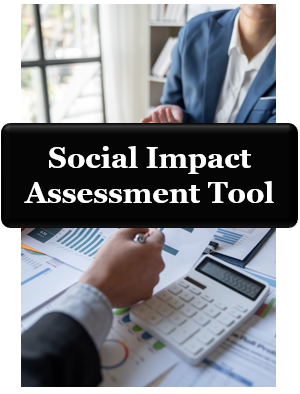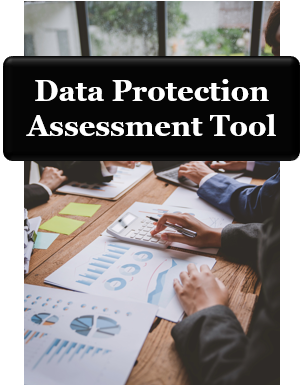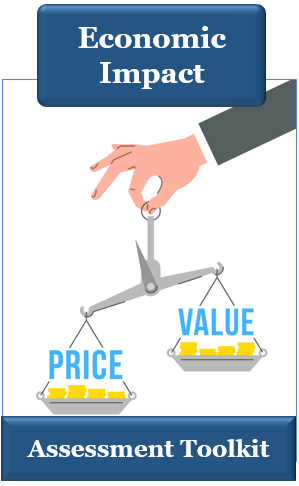Everything You Need to Know About Measuring Social Impact
As the world grapples with complex challenges such as inequality, environmental degradation, and cultural displacement, the need for a systematic approach to understanding and addressing these social impacts is paramount.
This is where Social Impact Assessment (SIA) emerges as a potent tool for promoting sustainable development and fostering positive change in our communities.
In this OCM Solution social impact assessments guide we’ll explore:
- What is a social impact?
- Types of social impacts
- Social impact assessment methodology
- Social impact assessment steps
- What social impact assessment tools are there?
- And so much more…
Furthermore, we’ll discuss the challenges and opportunities associated with implementing SIA social impact assessment, and how stakeholders can leverage its insights to foster positive socio economic impact on community or socio economic impact of business on government.

SIA Social Impact Assessment 2024 Guide
Get ready to dive in and explore everything you need to know about social impact assessment.
See Also: Environmental Impact Assessment Examples, Methods & Steps
Table of Contents: 2024 Guide on Social Impact Assessment Process and Social Impact Tools
Keep on scrolling down this page to read each section or click any link below to go directly to that section.
- What is Social Impact?
- What Are Social Impacts Types?
- Social Impacts Categories
- What is Social Impact Assessment? What is SIA?
- Methods for Measuring Social Impact
- Social Impact Assessment Methodology
- Social Impact Assessment Steps
- SIA Social Impact Assessment Examples
- Benefits of Using Social Impact Assessment Tools
- Conclusion | 2024 Guide on SIA Social Impact Assessment
- FAQ | SIA Impact Assessment Guide
To get started properly, the first question we need to answer is: “What is social impact?”
What is Social Impact? | Definition of Social Impact
Social impact definition refers to the effects or changes that an individual, organization, or initiative has on society and its constituents.
Social impact meaning encompasses the broader outcomes and consequences of actions, policies, programs, or projects beyond purely economic considerations, focusing on the improvement of social well-being and the resolution of social challenges.
Definition of social impact recognizes that actions and initiatives can have wide-ranging effects on various dimensions of society.
It’s important to know that there’s no standardized definition of social impact so you will encounter many different variations of social impact definition depending on the sector or category
What is a social impact in business?
In the context of business, definition of social impact refers to the influence and effects that a company’s activities, products, and operations have on society and the broader community.
A social impact meaning in business can manifest in various ways. It includes initiatives and practices that aim to address social and environmental challenges, promote sustainable development, and contribute to the well-being of communities.
Next, we’ll take a look at what are social impacts?
Do you have more information about “What is a social impact?” and social impact meaning? Please reach out and let us know. We’ll love to hear from you.
What Are Social Impacts? | Types of Social Impacts
Social impacts are changes that occur in one or more of the following areas:
- People’s way of life
- Culture
- Community
- Political systems
- Environment
- Health and well-being
- Personal and property rights
- Fears and aspirations
 What are social impacts?
What are social impacts?
These types of social impacts, as outlined by Vanclay in 2003, help assess and understand the various dimensions in which social changes can occur due to certain actions, projects, or developments.
Understanding the definition of social impact and considering various types of social impacts is important for evaluating the consequences on society as a whole.
Furthermore, these types of social impacts help in understanding the diverse ways in which project-related changes can influence us. It allows for a comprehensive social impact assessment and aids in developing a social impact strategy to mitigate negative social change while enhancing positive outcomes.
With that covered, it is time we look into what are social impacts categories. What are the main social impacts categories? Let’s find out!
Don’t Miss: The Ultimate Guide for the Project Planning Process
What are Social Impacts Categories?
Social impact categories refer to the various areas or domains in which social initiatives, programs, or organizations can have a positive social impact on society. These social categories represent different aspects of human life and well-being that can be addressed through social interventions.
While the specific social impact categorization may vary depending on the context, when conducting a social impact analysis, impacts are typically classified into five key categories.
Key social impact categories are:
- Community and institutional structures
- Population characteristics
- Political and social resources
- Individual and family changes
- Community resources
1. Community and Institutional Structures
This social impact assessments category focuses on the impact of social initiatives on community infrastructure and institutions.
Social impact examples that could be included in this category:
- Physical infrastructure development
- Access to community services
- Capacity building of institutions
Social Impact Example
- Positive Social Impact: Constructing a community library that provides access to books, educational resources, and computer facilities, promoting literacy, knowledge sharing, and community learning.
- Negative Social Impacts: Building a factory near a residential area, resulting in increased noise pollution, environmental contamination, and health risks for the community.
2. Population Characteristics
This category examines the impact of social initiatives on population demographics and characteristics.
Types of social impacts include:
- Changes in population size
- Age distribution
- Gender composition
Social Impact Example
- Positive Social Impacts: Implementing a healthcare program that offers prenatal care and reduces infant mortality rates, improving the overall health and well-being of the population.
- Negative Social Impacts: A development project displaces a community, leading to the loss of social ties, cultural identity, and disruption of community cohesion.
3. Political and Social Resources
This category assesses the impact of social initiatives on political systems and social resources within a community.
Types of social impacts may include:
- Access to decision-making processes
- Strengthening of social networks
- Empowerment of marginalized groups
Social Impact Example
- Positive Social Impacts: Establishing a community-based organization that advocates for the rights of marginalized populations, fostering social inclusion, and promoting equitable representation.
- Negative Social Change: Implementing policies that disproportionately benefit a particular social or political group, exacerbating social inequalities and marginalizing vulnerable communities.
Related: The Best Guide for Conducting an Economic Impact Assessment (Samples and Templates)
4. Individual and Family Changes
This category examines the impact of social initiatives on individuals and families.
Social impacts in this category could include:
- Economic well-being
- Access to education and healthcare
- Social empowerment
Social Impact Example
- Positive Social Impact: Providing vocational training and job placement services, leading to increased employability and income levels, thereby improving the economic stability of individuals and their families.
- Negative Social Change: Implementing a project that displaces families from their homes without proper resettlement support, resulting in social and economic hardships for affected individuals and families.
5. Community Resources
This category evaluates the impact of social initiatives on the availability and sustainability of community resources.
Types of social impacts may incorporate:
- Natural resource management
- Access to clean water and sanitation
- Environmental conservation
Social Impact Example
- Positive Social Impacts: Establishing a community garden that promotes sustainable agriculture, local food production, and enhances food security within the community.
- Negative Social Impacts: Exploiting natural resources without proper regulation or environmental safeguards, causing deforestation, loss of biodiversity, and disruption of ecological balance.
It’s important to consider that the specific impacts within each category can vary depending on the context and nature of the social initiatives. Social impact assessments help identify, measure, and manage these impacts to ensure positive outcomes and minimize potential negative consequences.
Now that we’ve identified all main categories, we’ll take a deep dive into answering “What is SIA?” and “What’s the social impact assessment definition?”
Popular Article: How to Measure the Success of a Project Using Change KPIs & OCM Tracking
What is Social Impact Assessment? | Social Impact Assessment Definition
So, what is SIA or Social Impact Assessment?
Social Impact Assessment (SIA) is a systematic process of evaluating the potential social consequences or impacts of policies, projects, programs, or developments.
Social impact assessments involve studying and understanding how these actions may affect individuals, communities, and society.
The primary goal of social impact assessment is to identify both positive social impacts and negative social impacts, along with their significance, and to propose social impact strategy for managing or mitigating any adverse effects.
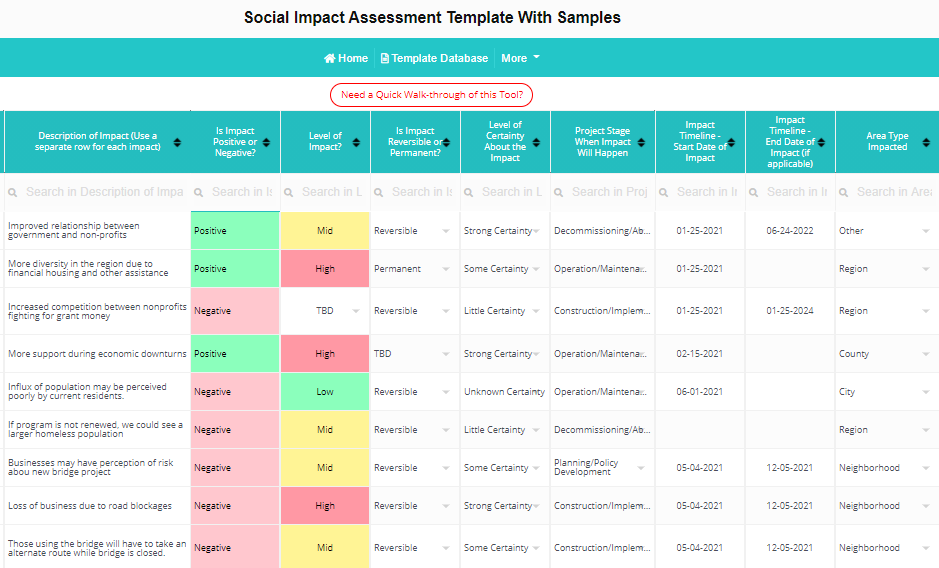
Example of social impact project in OCM Solution Social Impact Assessment Tool
What is the purpose of Social Impact Assessment?
The purpose of conducting a Social Impact Assessment is to inform decision-making, policy development, and project planning by considering the social implications and consequences of proposed actions.
Social impact assessments help stakeholders, including governments, organizations, and communities, understand and address the potential socio economic effects on communities before implementing the project.
Now that we have a clear answer to “What is SIA?”, we have to take a look at how to measure social impact project or initiative has. Ready?
Do you have any further input on what is social impact assessment purpose? Just reach out and let us know.
How to Measure Social Impact | Methods for Measuring Social Impact
Social impact measurement refers to the process of assessing, quantifying, and evaluating the outcomes and effects of interventions, programs, policies, or initiatives on social issues or challenges.
The process of measuring social impact involves systematically collecting, analyzing, and interpreting data to understand the social changes or improvements that result from these efforts.
Measuring social impact helps answer questions such as:
- What positive or negative social changes have occurred as a result of the intervention?
- To what extent have the intended social outcomes been achieved?
- What factors contributed to the observed impact?
- How can the intervention be improved or optimized for greater social impact?
Measuring social impact involves focusing on quantifiable social impact metrics that enable tracking and reporting of the work.
By measuring social impact, organizations can assess the value of their initiatives, identify areas for improvement, and make informed decisions to maximize their social impact.
Read More: Best Change Management Plan | Free Change Templates & Samples
Key Elements of How to Measure Social Impact
1. Social Impact Indicators: Defining and selecting specific social impact indicators or social impact metrics that capture the desired social outcomes and changes.
These social impact indicators should be measurable, meaningful, and aligned with the goals and objectives of the intervention.
Social Impact Metrics Examples:
- Education: Literacy Rate
- Health: Mortality Rate
- Employment: Unemployment Rate
- Gender Equality: Gender Pay Gap
2. Data Collection: Gathering relevant data through various methods such as:
- surveys
- interviews
- questionnaires
- observations
- social impact assessment template,
- Social Impact Assessment Tool that keeps your data systematic, consistent, and representative
- And more…
3. Data Analysis: Analyzing the collected data to understand the patterns, trends, and relationships between the intervention and the observed outcomes. This social impact analysis example can involve quantitative techniques (e.g., statistical analysis) and qualitative methods (e.g., thematic analysis).
Social Impact Analysis Example:
- Descriptive statistics
- Qualitative data analysis
- Impact evaluation framework – Social impact evaluation research
4. Attribution and Counterfactual Social Impact Analysis: Assessing the extent to which the observed outcomes can be attributed to the specific intervention.
Counterfactual social impact analysis involves comparing the outcomes with a plausible alternative scenario where the intervention did not occur, providing insights into the intervention’s contribution to the impact.
Social Impact Measurement Tools Examples:
- Randomized Control Trials (RCTs)
- Difference-in-Differences (DiD)
- Propensity Score Matching (PSM)
- Synthetic Control Method (SCM)
5. Reporting and Communication: OCM Solution Social Impact Assessment Tools comes equipped with social impact project report while presenting the findings, analysis, and insights in a clear and accessible manner.
Effective communication of social impact measurement results is essential for transparency, accountability, and stakeholder engagement.
Social Impact Projects Report Examples:
- Impact Report
- Social Impact Study
- Interactive Dashboards of Social Impact Projects
- Infographics & Visualizations
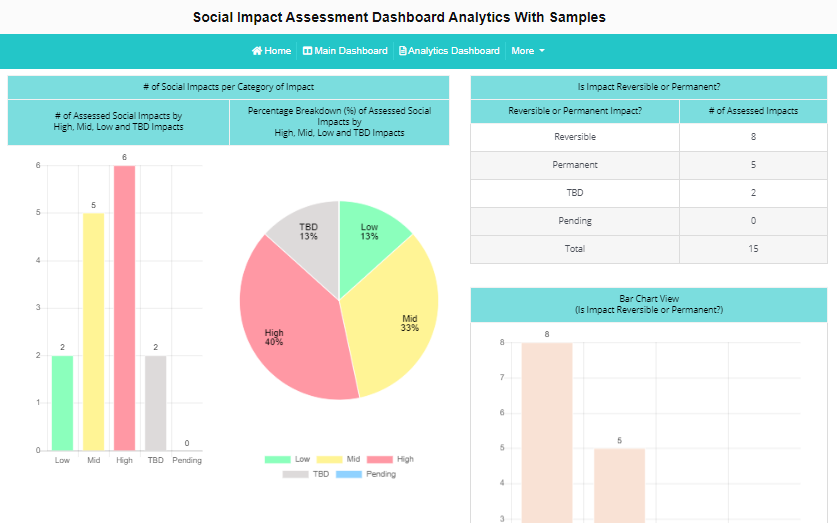
OCM Social Impact Measurement Tools – Example of Social Impact Metrics Report
6. Continuous Improvement: Social impact measurement is an iterative process that requires ongoing monitoring, social impact evaluation, and learning.
It enables organizations to adapt their social impact strategy, interventions, and practices based on the feedback and insights gained.
Social Impact Project Improvement Examples:
- Monitoring and Evaluation
- Learning and Knowledge Sharing
- Peer Learning Networks
Next, we’ll go take a look at social impact methodology that can be used in many different types of social impact assessments (impact assessment of CRS projects, social impact assessment study, assessment of socio economic impact on government, social impact assessment under Land Acquisition Act 2013, etc.)
Related: Best PIA/PII Privacy Impact Assessment | Everything You Need to Know
Social Impact Assessment Methodology | Social Impact Measurement Tools
Social impact assessment methodology refers to the systematic approaches and frameworks used to assess, measure, and evaluate the social impact of interventions, programs, policies, or initiatives.
Social impact assessment methodologies help organizations and stakeholders understand the outcomes and effectiveness of their efforts in creating positive social change.
Some of the commonly used social impact assessment methodology options include:
⋅ Theory of Change: Theory of Change is a framework that outlines the logical sequence of activities and expected outcomes to achieve a desired social impact.
It helps organizations articulate their goals, assumptions, and strategies and understand the causal pathways leading to impact.
⋅ Logic Model: A logic model is a visual representation that illustrates the relationships between inputs, activities, outputs, and outcomes of a program or intervention.
It helps stakeholders understand the connections between their actions and the intended social impact (socio economic impact on community, socio economic impact on government, etc.)
⋅ Social Return on Investment (SROI): SROI is a methodology that quantifies the social value created by an intervention or program.
It involves assigning a monetary value to social outcomes, considering both financial and non-financial impacts, to assess the return on investment in social terms.
⋅ Social Impact Evaluation: Social impact evaluation involves social impact assessment research and assessing the causal effects of an intervention on specific social outcomes.
Social impact evaluation employs various quantitative and qualitative research methods to measure the changes attributable to the intervention.

Social Impact Study
⋅ Outcome Mapping: Outcome mapping is one of social impact measurement methods that focuses on social impact assessment research, tracking, and understanding the changes in behavior, relationships, and actions of individuals, groups, or organizations involved in a program.
It emphasizes participatory processes, stakeholder engagement, and iterative learning to adapt strategies and achieve desired outcomes.
⋅ Social Accounting and Audit: Social accounting and audit involve the systematic social impact measurement methods, monitoring, and reporting of social impacts.
It includes gathering data, setting performance indicators, and verifying the social claims of an organization to ensure transparency and accountability.
⋅ Participatory Approaches: Participatory methodologies involve engaging stakeholders, including beneficiaries and communities, in the social impact assessment and social impact evaluation process. These approaches value the knowledge and perspectives of those affected by interventions and seek their active involvement in shaping the social impact evaluation process.
These social impact measurement methods and methodologies provide frameworks to understand, measure, and communicate the social impact of interventions and socio economic impact on government and/or communities.
The choice of methodology depends on the goals, context, resources, and stakeholders involved, and organizations often use a combination of methods to gain a comprehensive understanding of their social impact.
With methods for assessing social impact projects and initiatives covered, let’s take a look at the steps of social impact assessment.
Don’t Miss: Best, Free, and Complete Guide for Conducting Project Stakeholder Engagement & Management
Do you have any input on social impact meaning that we haven’t mentioned? If so, don’t hesitate to get in touch.
Social Impact Assessment Steps
In order to conduct a comprehensive evaluation of the effects and consequences of social impact projects, programs, policies, or interventions on society, a structured and systematic approach is necessary.
Social impact assessment steps, along with the use of specialized social impact measurement tools and social impact assessment template, provide a framework that guides the assessment process.
Below, we will outline the steps of social impact assessment and highlight the importance of utilizing appropriate social impact tools and social impact assessment template to ensure a rigorous and standardized evaluation.
These social impact assessment tools and templates aid in data collection, analysis, and reporting, enabling organizations and stakeholders to assess, measure, and enhance the social impact of their interventions.
By following these steps of social impact assessment and utilizing social impact tools and templates, a more thorough and effective assessment can be conducted, leading to informed decision-making and the creation of meaningful social change.
Social Impact Assessment Process | Steps of Social Impact Assessment
1. Develop an Effective Public Plan
Begin the social impact assessment by clearly defining the purpose and necessity of the proposed or existing project or activity, outlining the desired outcomes and objectives. This information is best presented in a social impact assessment template or social impact assessment tool such as software.
2. Context Analysis
Consider the broader context, including legal, social, political, and economic factors, in which the planned activities will be implemented. Seek input from experts and stakeholders to gain a comprehensive understanding of the environment and any past social impact assessment study.
3. Initial Screening
Identify the potential positive social impacts and negative social impacts resulting from the proposed or existing activities. Determine who is currently or might be affected and evaluate the social implications of the project or policy change.
4. Scoping
This step involves visiting the project site and consulting with relevant parties to confirm their understanding of critical issues.
For large-scale displacement (social impact assessment in land law), an on-the-ground assessment of repercussions is crucial.
Local knowledge may be necessary to identify options that can prevent or mitigate negative social change.
5. Planning
Develop a detailed plan for engaging, informing, consulting, and reporting to specific stakeholders, including community members, staff, funders, and policymakers. Define specific output and outcome metrics that will be used as a social impact metrics.
6. Baseline Social Impact Assessments
Collect initial qualitative and quantitative baseline data on demographics, socio-economics, community organization, socio-political structures, as well as community needs and values. This establishes a starting point on how to measure social impact changes.
7. Impact Prediction, Analysis, and Assessment
Use our social impact software to evaluate the level of impact, level of certainty about the impact, and cumulative impacts on the target communities.
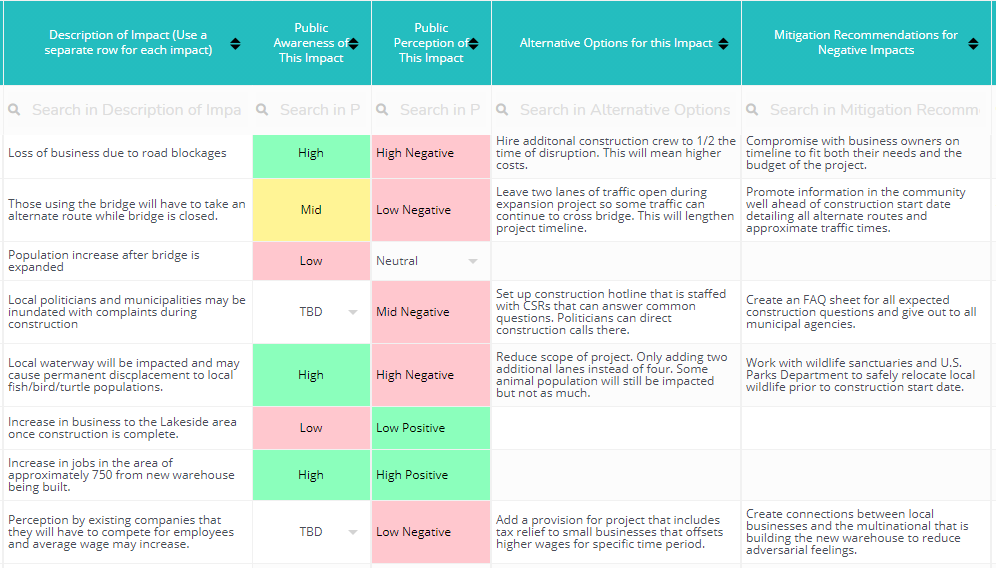
OCM Solution Social Impact Assessments – Levels of Impact
8. Mitigation Planning
Collaborate with stakeholders to develop a comprehensive plan for monitoring and mitigating negative social impacts resulting from less severe impacts identified.
9. Enhancing Benefits and Opportunities
Do a social impact analysis of qualitative and quantitative data to identify additional programmatic benefits and opportunities that can be integrated into the project to amplify its positive social impact.
10. Ongoing Engagement and Monitoring
Maintain regular engagement with stakeholders to understand and address evolving risks and opportunities. Continuously monitor the project’s progress, adapt activities as necessary, and make informed decisions to optimize social impact.
If a social impact study or assessment is for the business you also need to prepare a social impact statement.
What is a social impact statement?
A social impact statement is a document or declaration that outlines the anticipated or achieved social impact of a project, organization, or initiative.
It is typically prepared by businesses, non-profit organizations, or governmental entities to articulate their commitment to creating positive social change and to communicate their social impact goals and achievements to stakeholders.
With the process of social impact assessment outlined and all steps covered, we’ll take a look at principles of social impact assessment example scenarios.
Next, we’ll take a look at SIA assessment examples.
Popular Article: What You Need to Know for Conducting the Best Impact Analysis for an Upcoming Change
Social Impact Assessments Examples
To get an idea of how it pans out, we will explore various social impact assessment example scenarios across different contexts and types of social impact projects.
Each social impact assessment example highlights the diverse application of SIA impact assessment in areas such as nonprofit organizations, infrastructure projects, corporate social responsibility programs, policy changes, and community development initiatives.
Furthermore, each social impact assessment example demonstrates the importance of conducting SIA assessment to understand the potential benefits, challenges, and unintended consequences of interventions on communities and individuals.
By examining these real-world social impact example scenarios, we can gain a deeper understanding of how social impact assessments are conducted, the methods and social impact assessment tools employed, and the insights gained from assessing the social impact of different initiatives.
⋅ Nonprofit Organization – Social Impact Assessment Example
A nonprofit organization focused on education initiatives conducts a social impact assessment process to measure the effectiveness of its programs in improving literacy rates among disadvantaged communities.
They collect data on student performance, attendance, and feedback from teachers and parents to assess the impact of their interventions.
SIA assessment and social impact analysis help them understand the progress made in enhancing educational outcomes and guides future program improvements.
⋅ Infrastructure Project – Social Impact Assessment Example
A government agency embarking on a large-scale infrastructure social impact project, such as a transportation system, conducts SIA impact assessment to evaluate potential social implications.
They assess the impact on local communities, businesses, and vulnerable populations, considering factors such as displacement, access to services, and changes in community dynamics.
This assessment and social impact strategy help ensure that the project minimizes negative social change, addresses community concerns, and maximizes positive socio economic impact on community.
⋅ Corporate Social Responsibility (CSR) – Impact Assessment of CSR Projects
A company launches a CSR program to support local environmental conservation efforts.
They conduct a CSR impact assessment to measure the program’s effects on biodiversity, community engagement, and sustainable practices.
CSR impact assessment includes data on species preservation, community participation, and ecological indicators. Impact assessment of CSR projects enables the company to monitor and optimize the positive environmental impact of their initiatives.
 Impact Assessment of CSR Projects
Impact Assessment of CSR Projects
⋅ Policy Change – Social Impact Assessment Research Example
A government department proposes a policy change related to public healthcare.
Before implementing the change, they conduct SIA social impact assessment research to evaluate its potential effects on access to healthcare services, health outcomes, and equity across different populations.
The steps of social impact assessment involve data collection from healthcare providers, community surveys, and consultation with stakeholders.
This social impact evaluation research ensures that policy decisions consider the diverse needs and interests of the community and mitigate any unintended negative consequences.
⋅ Community Development Social Impact Project – Social Impact Assessment Example
A community development organization undertakes a social impact assessment for a housing project aimed at providing affordable housing to low-income families.
They follow all the social impact assessment steps and assess the impact on housing affordability, community integration, and quality of life indicators. The assessment involves surveys, interviews, and focus group discussions with residents and stakeholders.
This assessment helps ensure that the housing project meets the needs of the community and enhances overall socio economic effects on communities.
⋅ Social Impact Assessment Under Land Acquisition Act 2013 – Example of Social Impact Assessment in Land Law
Under the Land Acquisition Act 2013, a government body initiates a social impact assessment when acquiring land for a development project.
The social impact assessment in land law evaluates the potential social implications of land acquisition, considering factors such as livelihood disruption, cultural heritage preservation, and community well-being.
This social impact assessment land acquisition involves consultations, public hearings, and documentation of concerns raised by affected stakeholders.
By conducting a social impact assessment, the government body aims to ensure fair compensation, minimize adverse impacts, and address the social implications of land acquisition in a transparent and participatory manner.
These examples demonstrate the diverse applications of social impact assessments and social impact strategy in various sectors and highlight the importance of understanding and evaluating the social outcomes.
To make your assessment even more successful, next we’ll take a look at what are social impact assessment template and reporting and explore the benefits of using social impact assessment tools.
See Also: How to Assess Organization Culture & Change Impacts | Guide, Survey, Template
Do you have any questions or input about the CSR impact assessment or social impact assessment under Land Acquisition Act 2013? Just reach out and let us know.
Benefits of Using Social Impact Software | Social Impact Assessments Template & Reporting
Social impact software plays a crucial role in helping organizations measure and evaluate their social impact.
Social impact assessment tools such as OCM Solution Social Impact Assessment Tools provide a systematic and data-driven approach to measuring the outcomes and effectiveness of social programs, projects, initiatives, and investments.
The OCM Solution Social Impact Assessment Tools offers a comprehensive solution for conducting assessments of projects, programs, plans, or policies that may have a social impact on a specific geographical area or a particular group.
Our social impact assessment tool comes equipped with SIA template that lets you collect data on impact level, public awareness and perception, impact categories, and more.
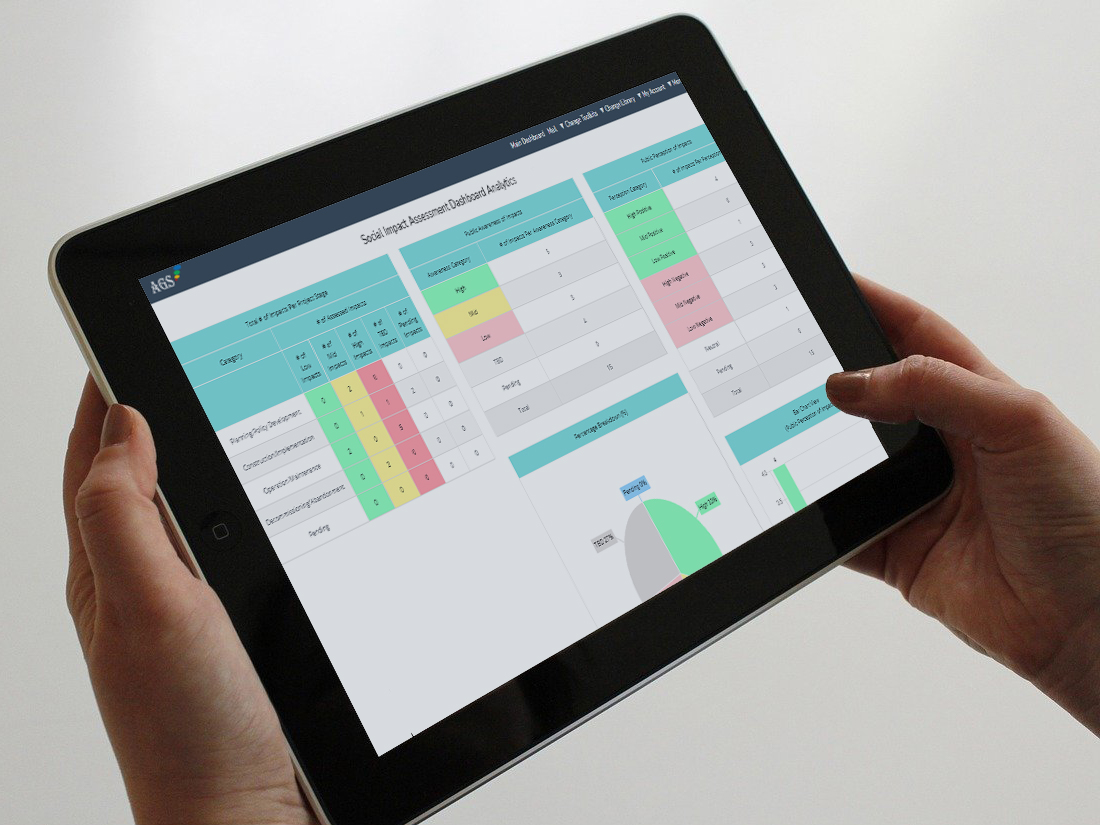
OCM Solution Social Impact Assessment Tool with Reporting
With the customizable SIA template, you’ll have an organized structure for your assessment, with predefined dropdowns for five common impact categories and inputs that generate reports on the level of impact at each project stage.
We have incorporated the best practices of social impact assessments into this comprehensive tool that helps save time during your social impact study or analysis.
Regardless of whether you’re working on CSR impact assessment or social impact assessment land acquisition project, our tool will help you with measuring social impact.
Don’t Miss: Free Excel Resource Planner Template for Single or Multiple Projects
Conclusion: Social Impact Assessments Guide
We have explored the importance of defining the scope and boundaries of the social impact assessments and selecting appropriate methodologies and indicators to measure social impact.
Additionally, we have discussed the significance of data collection, analysis, and interpretation in generating valuable insights and reports.
It is crucial to emphasize that social impact assessment is an iterative and ongoing process. Organizations should strive for continuous learning and improvement, using the assessment findings to refine strategies, interventions, and decision-making.
By following the best practices outlined in this guide and with the help of the right social impact tools and social impact software, organizations can effectively evaluate the potential social consequences of their projects, policies, or initiatives.
This will enable them to make informed decisions, enhance accountability, and optimize their efforts toward creating positive and sustainable social change.
FAQ: 2024 Guide on SIA Social Impact Assessment
What is a social impact?
Social impact definition refers to the effects or changes that an individual, organization, or initiative has on society and its constituents.
Social impact meaning encompasses the broader outcomes and consequences of actions, policies, programs, or projects beyond purely economic considerations, focusing on the improvement of social well-being and the resolution of social challenges.
What are social impact types?
Social impacts are changes that occur in one or more of the following areas:
• People's way of life
• Culture
• Community
• Political systems
• Environment
• Health and well-being
• Personal and property rights
• Fears and aspirations
What is social impact assessment definition? What is SIA?
Social Impact Assessment (SIA) is a systematic process of evaluating the potential social consequences or impacts of policies, projects, programs, or developments.
Social impact assessments involve studying and understanding how these actions may affect individuals, communities, and society.
Note: Content on OCM Solution's ocmsolution.com website is protected by copyright. Should you have any questions or comments regarding this OCM Solution page, please reach out to Ogbe Airiodion (Change Management Lead) or the OCM Solutions Team today. OCM Solution was previously known as Airiodion Global Services (AGS).
External sources: stock.adobe.com

